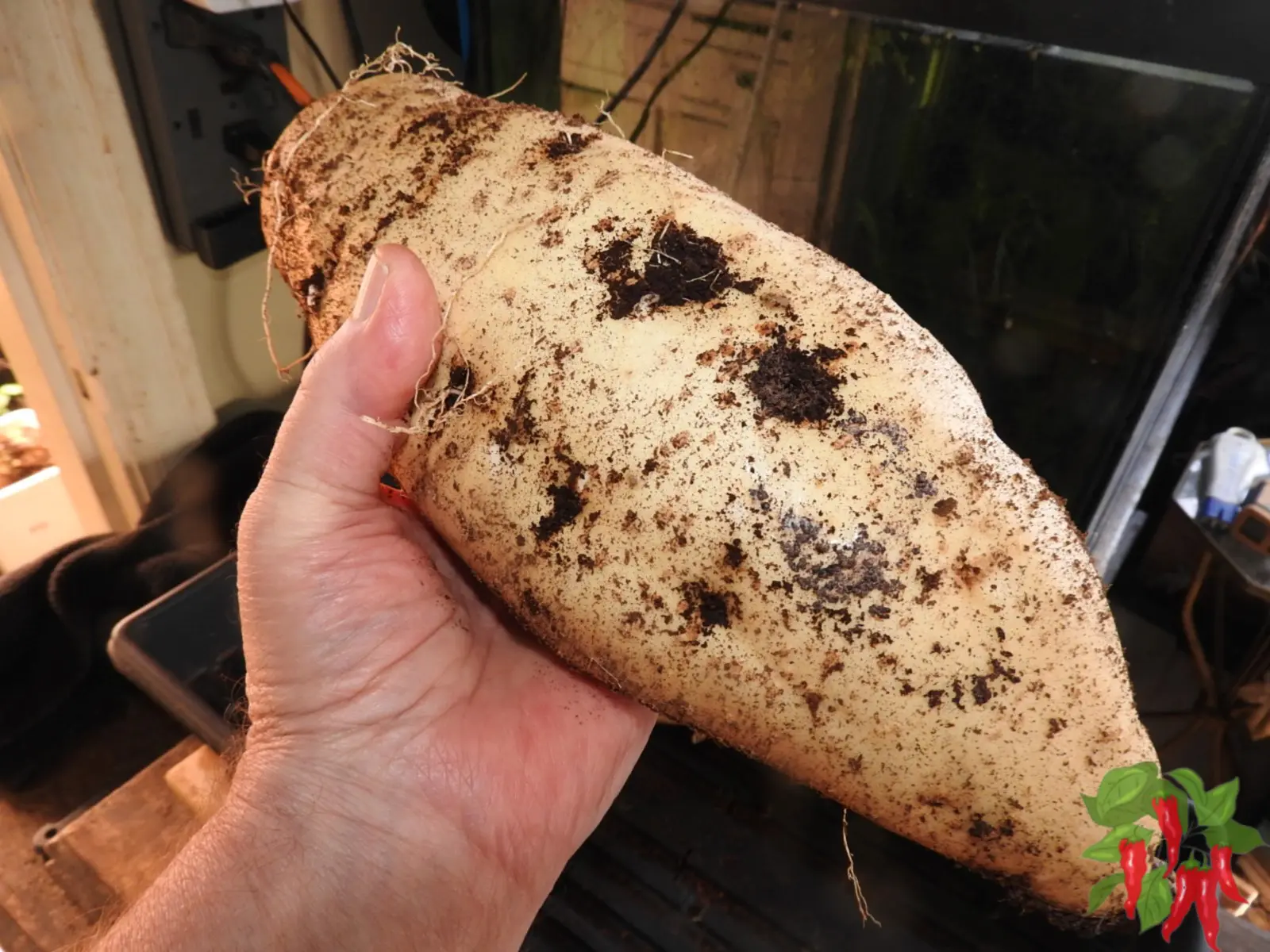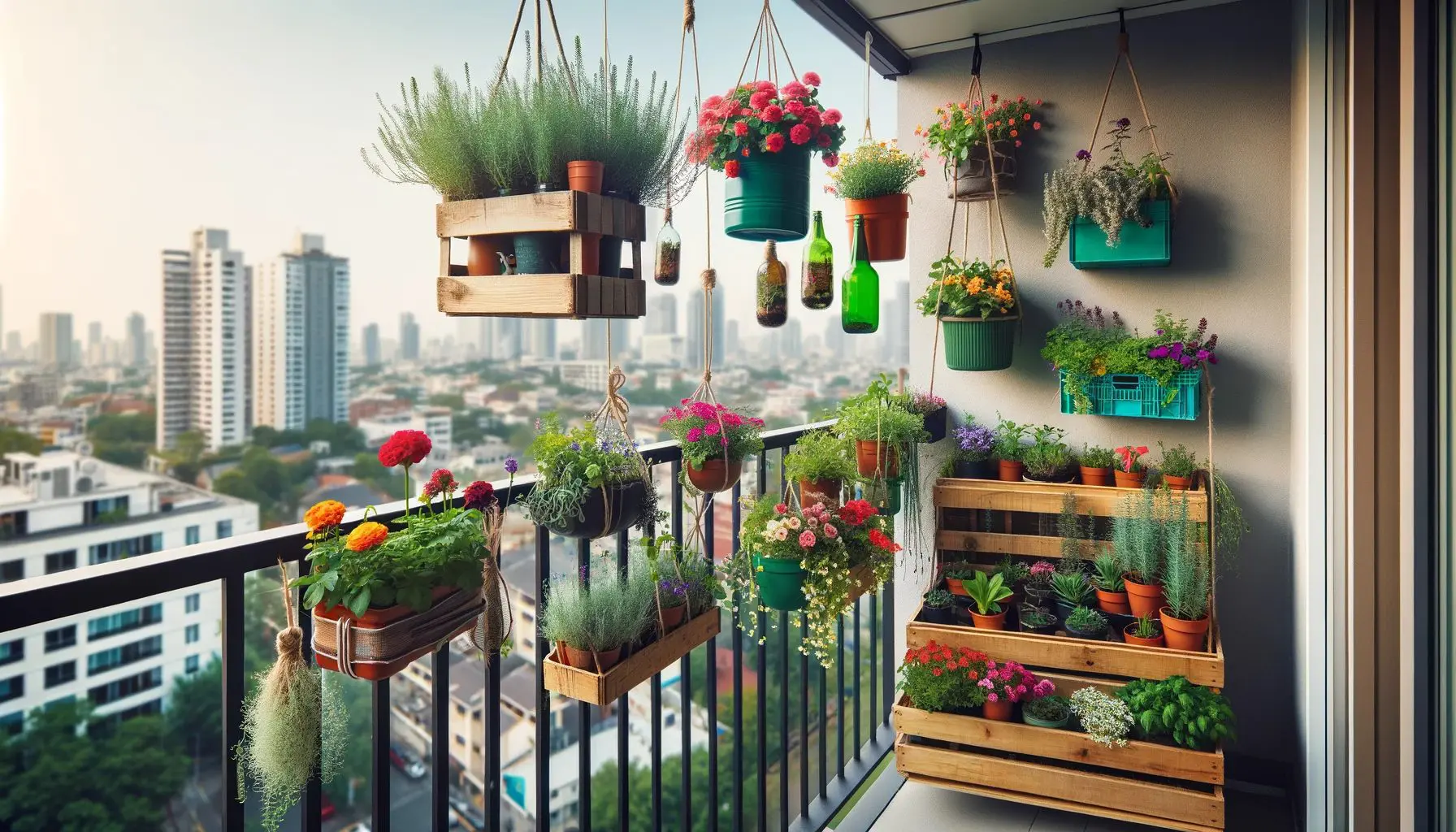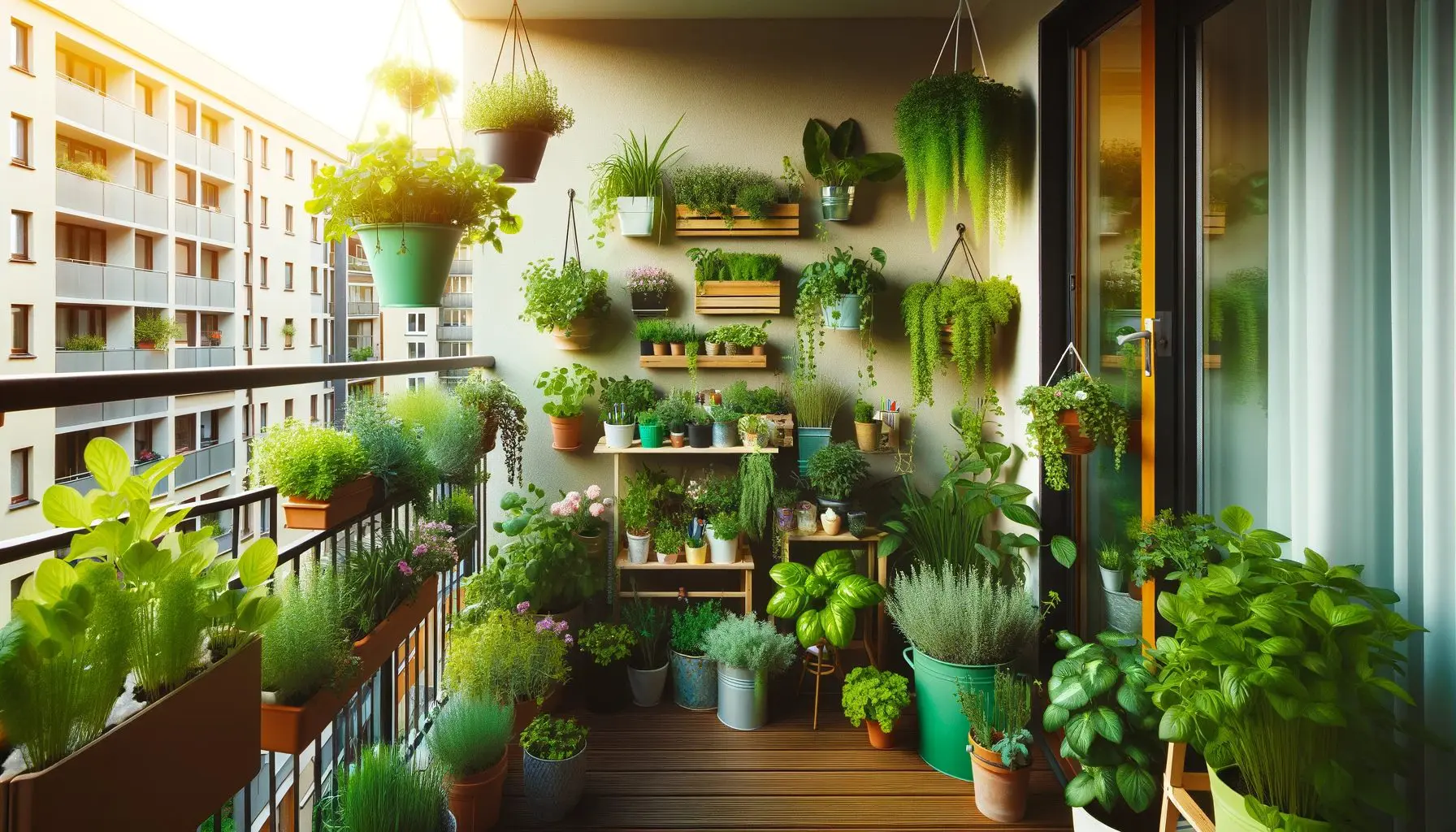This post contains affiliate links. If you buy something from one of our links we may earn a commission. Thanks
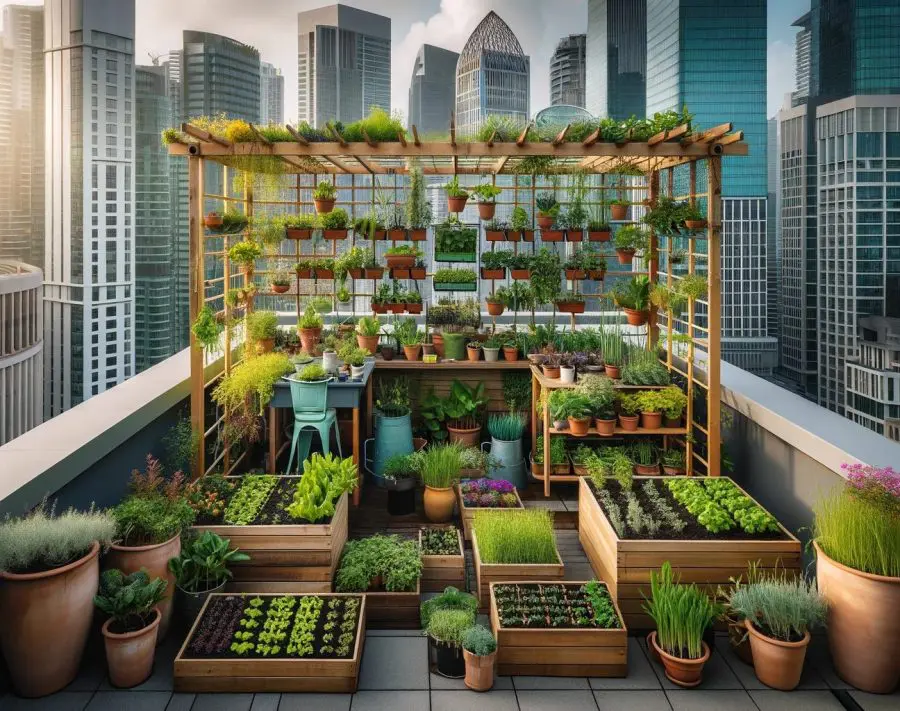
Dive into the world of small scale permaculture! Learn to transform tiny urban spaces into thriving eco-gardens with our simple, effective tips.
Key Takeaways:
- Small Scale Permaculture involves creating sustainable, self-sufficient ecosystems in limited spaces like balconies, rooftops, and urban gardens.
- It focuses on using permaculture principles to maximize space efficiency, conserve resources, and support biodiversity, even in densely populated urban areas.
Welcome to the exciting journey of small scale permaculture, where even the smallest spaces can bloom into vibrant, sustainable gardens.
Let’s explore how to turn your urban nook into an eco-friendly paradise, one plant at a time!”
Small Scale Permaculture for Balconies and Backyards
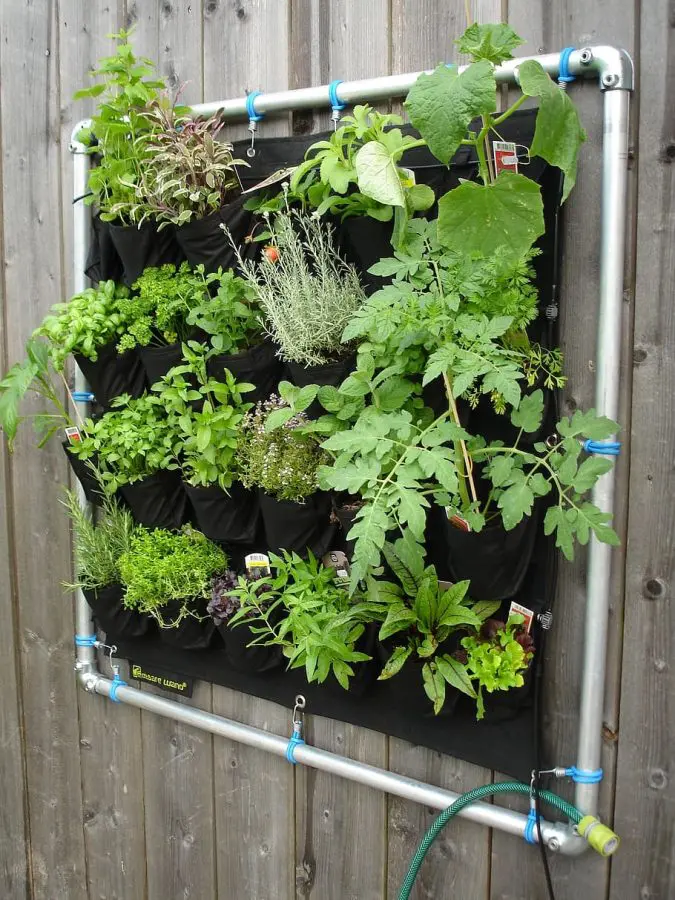
Small scale permaculture is a gateway to sustainable living, even in the most compact urban spaces.
For those with balconies or small backyards, permaculture isn’t just possible; it’s a thriving, vibrant option.
This approach reimagines limited spaces as miniature ecosystems, proving that impactful permaculture doesn’t require vast acreage.
- Utilizing Vertical Space: Balconies are ideal for vertical gardening. Techniques like hanging planters and trellises allow you to grow upwards, making the most of limited space while cultivating a variety of plants.
- Container Gardening: Backyards and balconies benefit greatly from container gardening. Using pots and planters, you can grow everything from herbs to small vegetables, adapting your garden to the space you have.
- Companion Planting: This permaculture practice involves planting compatible plants together in containers or small garden beds to enhance growth, deter pests, and utilize space efficiently.
- Water and Waste Management: Implement small-scale composting and water-saving irrigation systems like drip lines or self-watering planters. Rain barrels can be used even in small spaces to collect and reuse water.
- Creating Micro-Ecosystems: Even a small balcony or backyard can become a micro-ecosystem. By choosing the right combination of plants, you can attract beneficial insects and birds, enhancing biodiversity and the health of your garden.
- Edible and Ornamental Plants: Mix edible plants with ornamentals to create a space that is both beautiful and productive. Herbs, leafy greens, and even small fruit-bearing plants can coexist with flowers and decorative plants.
- Adapting to Local Conditions: Tailor your small-scale permaculture garden to your local climate and available sunlight. Choose plants that are suited to your specific environmental conditions for a more resilient and thriving garden.
1. Permaculture Zone Planning: Maximizing Efficiency in Your Garden
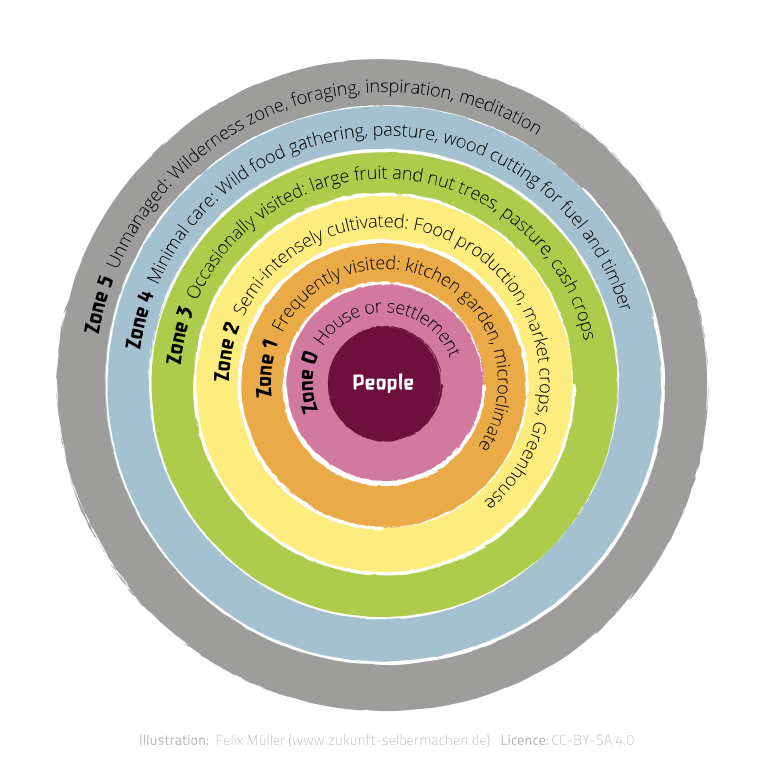
Permaculture zone planning is a vital first step in backyard permaculture design, optimizing the efficiency of your garden space.
By strategically organizing your garden based on usage frequency and accessibility, you can create a low-maintenance, productive space that aligns with your daily routine and the natural ecosystem.
- Understanding Zones: Permaculture divides a garden into zones, from Zone 0 (the home) to Zone 5 (wild nature). Each zone has a specific purpose, with zones closest to your home containing elements you use most often, like herb and vegetable gardens.
- Zone 1 – High Attention Areas: This area is usually the kitchen garden, containing vegetables, herbs, and plants needing regular attention. It’s a great way to have fresh, organic food at your doorstep.
- Zone 2 – Less Frequent Maintenance: Here, you might find perennial plants, small fruit trees, and larger vegetable gardens which require less daily care but still benefit from regular monitoring.
- Zone 3 – Semi-Wild Areas: Often used for larger fruit trees and food sources that don’t need daily attention. This zone can also include elements like compost bins, which turn garden waste and organic materials into nutrient-rich soil.
- Zone 4 – Minimal Management: This area is typically for managed woodlands or larger animal pastures. It’s a part of the garden that needs occasional attention, aligning with the natural systems of your local environment.
- Zone 5 – Wild Nature: The outermost zone, left to natural processes. It’s a space to observe natural ecosystems and encourage biodiversity, benefiting soil health and providing habitat for beneficial insects and wildlife.
Incorporating these zones into your backyard permaculture design ensures that every part of your garden serves a purpose, whether it’s for food production, wildlife habitat, or simply enjoying nature.
2. Water Management Techniques in Permaculture
Effective water management is crucial in permaculture gardening. By utilizing innovative techniques like swales, keyline design, and greywater systems, you can maximize water use efficiency in your home gardens. This not only conserves this vital resource but also supports a thriving natural ecosystem and improves soil quality.
- Swales for Water Harvesting: Swales, shallow trenches following the contour lines of your land, are a great way to capture rainwater. This technique reduces soil erosion and directs water to where it’s most needed, benefitting plants and the local environment.
- Keyline Design for Landscape Hydration: Keyline design is about maximizing the beneficial use of water. It involves strategically placed channels that distribute water evenly across the land, ideal for larger garden areas and improving soil moisture throughout the year.
- Greywater Systems for Reuse: Greywater systems recycle water from household use (like sinks and showers) for irrigation. They are an excellent way to reuse water, especially in dry climates, reducing reliance on external water sources and supporting a sustainable, closed-loop system in your garden.
- Rainwater Harvesting: Beyond rain barrels, consider installing larger rainwater catchment systems. These can store energy in the form of water for the dry season, ensuring a consistent water source for your garden.
- Natural Ponds and Water Features: Creating a natural pond or water feature attracts wildlife and can serve as a central point in your garden’s ecosystem. It’s a beautiful way to integrate a water source, promoting biodiversity and enhancing the aesthetic appeal of your garden space.
Implementing these water management techniques in your backyard permaculture design not only conserves water but also contributes to a resilient, self-sustaining garden that thrives in harmony with natural systems.
3. Soil Building Strategies in Permaculture
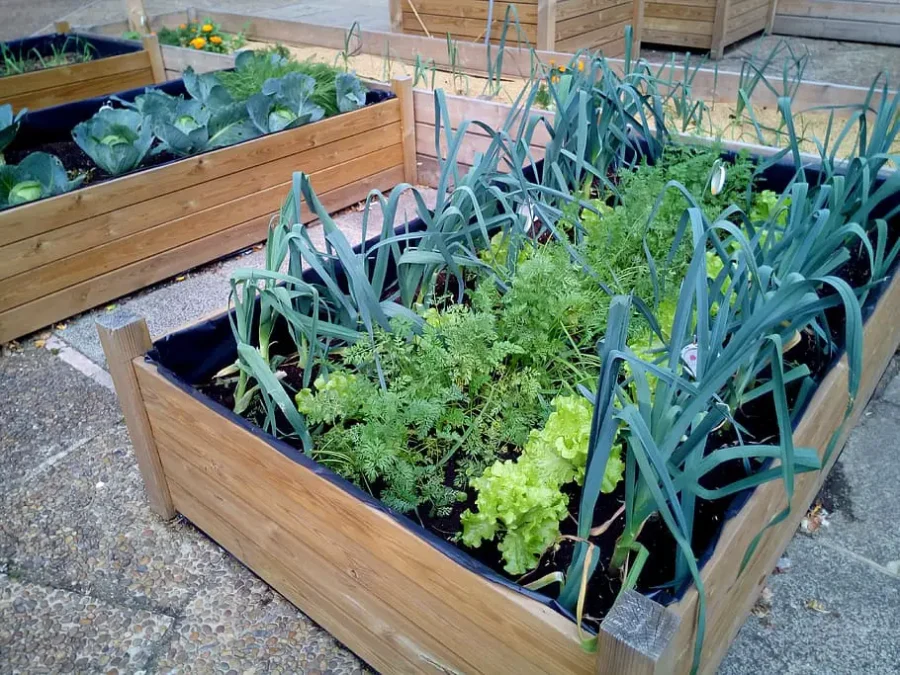
Building healthy soil is the foundation of permaculture gardening. Through organic matter, biochar, and innovative practices like hugelkultur, you can significantly enhance soil quality.
These methods not only enrich the soil but also support a thriving garden, essential for maintaining a balanced natural ecosystem in your home gardens.
- Incorporating Organic Matter: Adding compost, leaf litter, and green waste to your garden improves soil structure and fertility. It’s a natural way to nourish your soil, promoting robust plant growth and a vibrant natural ecosystem.
- Biochar for Soil Health: Biochar, a form of charcoal added to soil, helps retain moisture and nutrients. It’s a great way to improve soil quality, especially in areas with poor soil, enhancing the overall productivity of your garden space.
- Hugelkultur for Long-term Fertility: Hugelkultur involves creating raised beds with layers of wood, organic materials, and soil. This method mimics the natural process of woodland decomposition, providing a rich, self-fertilizing bed for your plants, particularly beneficial for vegetable gardens.
- Worm Farming for Soil Enrichment: Vermicomposting, or worm farming, transforms kitchen scraps and garden waste into nutrient-rich compost. This not only reduces waste but also provides an excellent organic material for enhancing soil health in your garden.
- Mulching to Prevent Soil Erosion: Using organic mulches like straw, wood chips, or dead leaves helps retain soil moisture, suppress weeds, and prevent soil erosion. Sheet mulching is a particularly effective technique for improving soil quality over time.
By adopting these soil building strategies, you’ll create a fertile foundation for your garden, essential for supporting a diverse range of plants and wildlife. Healthy soil is the key to a successful permaculture garden, ensuring it remains productive and sustainable for years to come.
4. Integrating Animals into Permaculture Gardens
Incorporating animals into your backyard permaculture design enhances the natural ecosystem.
From pollinators like bees to small-scale poultry, animals play a crucial role in maintaining garden balance.
They contribute to soil health, pest control, and overall garden productivity, embodying the interconnectedness of all elements in permaculture gardening.
- Benefits of Bees and Pollinators: Bees and other pollinators are vital for a thriving garden. They help in the pollination of many plants, increasing the yield of fruits and vegetables. Creating a habitat for these beneficial insects, with a variety of plants and water sources, enriches the biodiversity of your garden.
- Chickens for Pest Control and Fertilizer: Chickens can be an excellent addition to a permaculture garden. They provide natural pest control by eating insects and their waste acts as a potent organic fertilizer, enhancing soil quality.
- Ducks for Slug Control and Aeration: Ducks are great for controlling slugs and other pests. Their foraging also helps aerate the soil, and their waste is an excellent source of nutrients for plants.
- Integrating Small Livestock: If space allows, small livestock like goats or sheep can help manage vegetation and provide manure for composting. They’re particularly useful in larger permaculture systems.
- Creating Wildlife Habitats: Beyond domesticated animals, encouraging wildlife like birds, insects, and small mammals creates a balanced ecosystem. Incorporating elements like birdhouses, insect hotels, and wildflower patches attracts diverse species, contributing to the garden’s natural balance.
Incorporating animals into your permaculture garden not only benefits the natural ecosystem but also adds to the joy and fulfillment of gardening.
It’s a step towards creating a more self-sufficient and sustainable living space that resonates with the basic principles of permaculture.
5. Case Studies and Success Stories in Permaculture
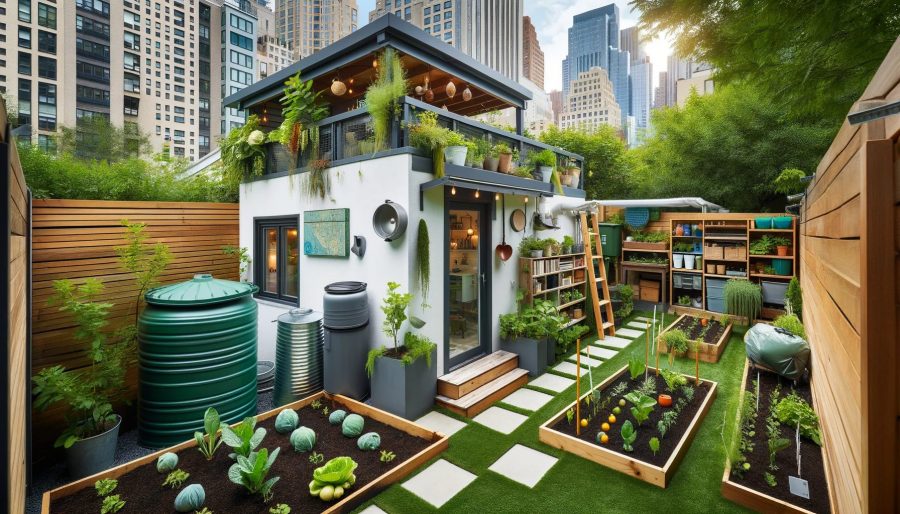
Case studies and success stories provide invaluable insights into the practical applications of permaculture principles.
From barren backyards to lush food forests, these real-life examples illustrate the transformative power of permaculture, showcasing improved soil quality, increased biodiversity, and the creation of self-sustaining ecosystems in home gardens.
Case studies of successful permaculture projects around the world (permaculturaviva.info)
PermR’s case studies | International Permaculture CoLab
-
- Transforming Barren Land into a Food Forest: Highlight a case where a once barren backyard was turned into a thriving food forest. This transformation demonstrates how permaculture techniques like companion planting, soil enrichment with organic matter, and the integration of a variety of plants can create a sustainable ecosystem providing diverse food sources.
- Urban Yard to Permaculture Haven: Showcase an example of an urban yard transformed using permaculture design. Emphasize the incorporation of raised beds, rain gardens, and native plants, highlighting the efficient use of space and resources in a small garden area.
- School Gardens as Educational Tools: Discuss the impact of permaculture principles applied in school gardens. These projects not only provide green space and organic food but also serve as hands-on educational environments for students to learn about sustainable living and natural ecosystems.
- Community Gardens Promoting Social Connection: Explore the role of community gardens in urban settings. These gardens are not just a source of fresh produce; they foster community engagement, offer learning opportunities, and enhance local environments, embodying permaculture’s ethos of ‘People Care’.
Permaculture’s ethos of ‘People Care’ underpins its philosophy, emphasizing the importance of creating systems that not only benefit the environment but also enhance the wellbeing of individuals and communities.
It’s about nurturing spaces that provide sustenance, shelter, and a sense of connection, fostering a harmonious relationship between people and the natural world.
6. People Care in Permaculture
In practical terms, ‘People Care’ in permaculture manifests in various ways:
- Creating Inclusive and Educational Spaces: Permaculture gardens often serve as educational tools, enlightening people about sustainable living and organic practices. These spaces offer opportunities for learning, skill development, and spreading awareness about environmental stewardship.
- Promoting Food Security and Health: By encouraging individuals to grow their own food using permaculture techniques, there is an increase in access to fresh, nutritious produce. This not only improves physical health but also enhances food security at a local level.
- Fostering Community Engagement: Permaculture projects, especially community gardens, create a platform for social interaction, cooperation, and community building. These initiatives bring people together, fostering a sense of belonging and mutual support.
- Enhancing Mental and Emotional Well-being: The act of gardening and being in nature has been shown to have therapeutic effects. Permaculture gardens, with their emphasis on natural beauty and biodiversity, offer a peaceful retreat from the hustle of modern life, contributing to mental and emotional well-being.
- Sustainable Livelihoods: Permaculture also provides avenues for sustainable livelihoods through practices like selling organic produce, offering permaculture design consultancy, or conducting educational workshops. This economic aspect ensures that people can sustainably support themselves while adhering to ecological principles.
In essence, ‘People Care’ in permaculture is about creating sustainable systems that not only respect the earth but also enrich human lives, building a future where both the environment and people can thrive together.
7. Permaculture for Different Climates
Adapting permaculture techniques to local climates is key to successful gardening.
Whether in arid deserts or humid tropics, permaculture principles can be tailored to suit diverse environmental conditions.
This adaptability ensures that your garden thrives by aligning with the natural ecosystem and local climate specifics.
-
-
- Arid and Dry Climates: In dry regions, focus on conserving water. Techniques like mulching, using drought-tolerant native plants, and efficient irrigation systems (such as drip irrigation) are vital. Rainwater harvesting and greywater systems are also crucial for maximizing available water resources.
- Temperate Climates: These regions are ideal for a wide variety of plants. Emphasizing soil health through organic materials and implementing strategies for water conservation and efficient use (like rain gardens and rain barrels) can ensure year-round productivity.
- Tropical Climates: High rainfall and year-round warmth in tropical climates offer unique opportunities and challenges. Emphasize on creating a layered garden space with tall trees, shrubs, and ground covers to mimic the natural rainforest structure. Soil erosion control and water management, considering the intense rainfalls, are essential.
- Cold and Winter Climates: In areas with harsh winters, focus on extending the growing season. Utilize cold frames, greenhouses, and mulching to protect plants during winter months. Growing cold-hardy crops and using strategies like south-facing slopes for maximum sun exposure can be beneficial.
- Urban Microclimates: In big cities, where space is limited and environments are more controlled, container gardens, rooftop gardens, and vertical gardening become essential. Urban permaculture also involves innovative water management and waste recycling techniques to make the most of the small space.
-
Adapting to Your Climate
Understanding and adapting permaculture principles to fit your local climate not only enhances the success of your garden but also ensures it’s in harmony with the natural ecosystem, making it a sustainable and resilient space.
This approach to gardening recognizes the importance of working with, rather than against, the local environment.
By being mindful of your local climate, you can create a garden that is not only more likely to thrive but also becomes an integral part of the larger ecological system.
Adapting to climate specifics, whether it involves selecting the right variety of plants, optimizing water use, or modifying garden layouts, is crucial.
It ensures that your permaculture garden contributes positively to the local ecosystem, promotes biodiversity, and establishes a resilient and sustainable gardening practice.
In the essence of permaculture, such adaptability and resilience are key.
They reflect the dynamic interplay between human ingenuity and nature’s wisdom.
By observing and learning from the natural environment, permaculture gardeners can develop systems that are not only productive but also sustainable in the long term.
This harmonious relationship with the natural world is at the heart of permaculture, making it a powerful tool for sustainable living and environmental stewardship.
8. Sustainable Materials and Tools in Permaculture
Utilizing sustainable materials and tools is a fundamental aspect of permaculture design.
By choosing eco-friendly options, you contribute to a natural ecosystem and reduce environmental impact.
From recycled materials to energy-efficient tools, each choice in your home garden reflects the permaculture principle of living harmoniously with nature.
-
-
- Recycled and Upcycled Materials: Embrace materials like reclaimed wood for garden beds or repurposed containers for planting. Using recycled materials not only reduces waste but also adds character and functionality to your garden space.
- Natural and Renewable Resources: Opt for natural materials like bamboo, straw, or untreated wood. These materials blend seamlessly with the garden environment and are renewable, aligning with permaculture’s ethos of sustainability.
- Eco-Friendly Garden Tools: Choose tools that are durable and made from sustainable materials. Hand tools that don’t require fossil fuels are preferable, reducing your carbon footprint and promoting a more natural gardening experience.
- Solar-Powered Solutions: Incorporate solar-powered lights or irrigation systems. These harness renewable energy, making your garden more sustainable and helping to store energy in an eco-friendly way.
- Water-Saving Irrigation Tools: Utilize drip irrigation or soaker hoses which are efficient in water usage, crucial in maintaining soil moisture without overusing water resources.
- Compost Bins and Worm Farms: Implementing compost bins and worm farms not only recycles kitchen and garden waste but also produces valuable organic material for enriching soil health.
- Biodegradable Planting Materials: Use biodegradable pots for seedlings and natural mulches like leaf litter or wood chips, which decompose and improve soil structure over time.
-
By integrating these sustainable materials and tools into your permaculture garden, you not only minimize environmental impact but also enhance the overall health and productivity of your garden. This approach to gardening is a step towards a more sustainable and regenerative lifestyle.
9. Community Engagement and Education in Permaculture
Community engagement and education are pivotal in spreading the principles of permaculture.
By involving local communities and providing educational opportunities, permaculture extends beyond individual gardens, fostering a wider appreciation and application of sustainable practices.
This communal approach is essential for building a more environmentally conscious and cohesive society.
-
-
- Community Gardens as Learning Centers: Community gardens serve as ideal platforms for hands-on learning and sharing permaculture techniques. They are not just spaces for growing food but also for educating community members about sustainable living and organic practices.
- Workshops and Permaculture Courses: Offering workshops and courses in permaculture design, organic gardening, and sustainable living practices can empower individuals with the knowledge and skills to implement permaculture in their own spaces, whether in small gardens or larger agricultural settings.
- School Programs and Youth Involvement: Integrating permaculture into school curriculums and youth programs can inspire younger generations to embrace sustainable practices early on. School gardens, in particular, can be great ways to teach children about the natural world, food production, and environmental stewardship.
- Local Permaculture Groups and Meetups: Encouraging the formation of local permaculture groups and organizing regular meetups can facilitate knowledge exchange, provide support, and foster a sense of community among permaculture enthusiasts.
- Online Platforms and Social Media: Utilizing online platforms and social media for education and outreach can extend the reach of permaculture principles. Sharing experiences, tips, and successes through blogs, videos, and forums can inspire and guide others globally.
- Collaboration with Environmental Organizations: Partnering with local environmental organizations, NGOs, and government bodies can amplify the impact of permaculture initiatives, leading to broader community involvement and support.
-
Through these community engagement and education efforts, permaculture can transcend individual gardens, creating a ripple effect that promotes sustainable living, biodiversity, and environmental responsibility on a larger scale.
10. Permaculture’s Ethical Framework: Earth Care, People Care, Fair Share
Permaculture is anchored in a set of ethics: Earth Care, People Care, and Fair Share.
These principles guide every aspect of permaculture design, ensuring that practices not only benefit the environment and individuals but also promote fairness and equity.
They form the moral foundation of sustainable and regenerative living.
-
-
- Earth Care – Protecting Our Planet: This principle emphasizes the importance of conserving and regenerating natural resources. It involves practices like preserving native plants, promoting biodiversity, and using organic materials to improve soil quality. Earth Care ensures that our actions contribute positively to the natural ecosystem.
- People Care – Nurturing Communities: People Care focuses on the wellbeing of individuals and communities. It’s about creating permaculture systems that provide for people’s needs such as food, shelter, and a healthy environment. This principle also encourages community engagement and education in sustainable living practices.
- Fair Share – Equity and Limits: Fair Share is about recognizing the limits of consumption and ensuring equitable distribution of resources. It involves sharing surplus produce, knowledge, and resources with others and promoting a lifestyle that minimizes waste and consumption.
- Integrating the Ethics in Garden Design: These ethical principles can be reflected in garden design through practices like creating spaces for community gathering, using sustainable and locally sourced materials, and designing gardens that support local wildlife and the broader environment.
- Educational Outreach and Advocacy: Beyond the garden, these ethics can be promoted through educational programs, workshops, and advocacy for sustainable practices. It’s about inspiring others to adopt a lifestyle that respects and nurtures the Earth and its inhabitants.
-
By embracing these ethical principles, permaculture goes beyond gardening techniques; it becomes a holistic approach to living, one that respects the Earth, cares for people, and shares resources equitably, fostering a sustainable future for all.
11. Permaculture in Small and Urban Areas
Permaculture isn’t limited to large spaces; it’s equally applicable in small and urban areas.
By adapting permaculture principles to fit small gardens, balconies, and rooftops, you can create green, productive spaces in the heart of big cities.
This approach transforms urban environments into thriving ecosystems.
-
-
- Maximizing Limited Space: Utilize vertical gardening, container gardens, and trellises to grow plants upwards, making the most of limited space. This is especially effective in urban areas where ground space is scarce.
- Balcony and Rooftop Gardens: Turn balconies and rooftops into mini permaculture ecosystems. Selecting the right plants for these environments can provide a variety of benefits, from reducing urban heat islands to creating a personal green space.
- Urban Water Management: Implementing rain barrels and small-scale greywater systems can be effective in urban settings. These practices help conserve water, which is especially important in areas with limited access to natural water sources.
- Community Engagement: Urban permaculture often includes community elements, like shared gardens or collaborative projects. These initiatives not only provide fresh produce but also foster community connections and educate residents about sustainable living.
- Pollution and Heat Reduction: Urban permaculture gardens can help mitigate air pollution and reduce heat in densely populated areas. Plants absorb pollutants and provide cooling through shade and evapotranspiration.
- Wildlife Corridors and Biodiversity: Even small urban gardens can contribute to biodiversity by providing habitats for insects, birds, and other urban wildlife. This enhances local ecosystems and connects urban areas to the broader natural world.
-
Adapting permaculture principles to small and urban areas demonstrates the versatility and inclusivity of permaculture.
It’s a testament to how even the smallest efforts can contribute significantly to creating more sustainable and livable urban environments.
FAQs on Urban and Small Space Permaculture
Navigating the realm of urban and small space permaculture can raise many questions.
Whether you’re a seasoned gardener or a beginner, these FAQs are designed to address common queries, offering practical advice and insights to help you successfully integrate permaculture principles into your unique urban or small garden setting.
Q: How Can I Start a Permaculture Garden in a Small Urban Space?
A: Begin by assessing your available space, whether it’s a balcony, rooftop, or small yard.
Use container gardens, vertical gardening, and trellises to maximize space.
Start with easy-to-grow plants suited to your local climate and gradually incorporate more permaculture principles like water conservation and composting.
Q: What Are the Best Plants for Urban Permaculture Gardens?
A: The best plants depend on your local climate and available space.
Generally, choose hardy, low-maintenance plants like herbs, leafy greens, and dwarf fruit trees.
Pollinator-friendly flowers and native plants are also great for supporting local ecosystems.
Q: Can I Implement Water Conservation Techniques in a Small Garden?
A: Utilize rain barrels to collect rainwater for irrigation and consider drip irrigation systems for efficient water use.
In very small spaces, even a simple watering can be a mindful way to control water usage.
Q: How Can Urban Permaculture Gardens Benefit the Environment?
A: Urban permaculture gardens help reduce carbon footprints by providing local, organic produce.
They also create green spaces that support biodiversity, mitigate urban heat islands, and improve air quality.
These gardens can become vital mini-ecosystems within the urban landscape.
Q: Is Permaculture Possible in Apartment Living?
A: Yes, even in an apartment, you can practice permaculture principles.
Balcony gardens, window boxes, and indoor container gardens are great ways to grow plants.
Composting can be done using compact systems like bokashi bins or worm bins, suitable for small spaces.
Composting with a Compost Sak
Discover the ease of composting with a Compost Sak! Perfect for small spaces, this fabric bin turns kitchen scraps into nutrient-rich soil for your garden. This a great idea and I wish I had found it sooner.
Conclusion: Embracing Urban and Small Space Permaculture

Urban and small space permaculture is a testament to the adaptability and reach of sustainable gardening practices.
By creatively applying permaculture principles in limited spaces, we can transform even the smallest areas into productive, green, and ecologically sound spaces, contributing positively to both our lives and the urban environment.
-
-
- Innovation and Creativity: Small space permaculture encourages innovation, turning challenges like limited space into opportunities for creative gardening solutions.
- Sustainability in Urban Settings: These gardens are a step towards more sustainable urban living, offering a way to reduce our ecological footprint while enjoying the benefits of fresh, organic produce.
- Community and Wellbeing: Urban permaculture projects often bring people together, fostering a sense of community and wellbeing. They provide spaces for relaxation, socialization, and connection to nature in busy urban settings.
- Environmental Impact: Small urban gardens collectively have a significant positive impact on the environment. They promote biodiversity, improve air quality, and can even help regulate urban temperatures.
- Education and Awareness: These gardens serve as educational tools, raising awareness about sustainable living practices and inspiring others to start their own permaculture projects.
-
Urban and small space permaculture is more than just a gardening method; it’s a movement towards a more sustainable, connected, and environmentally conscious way of living in our increasingly urbanized world.


